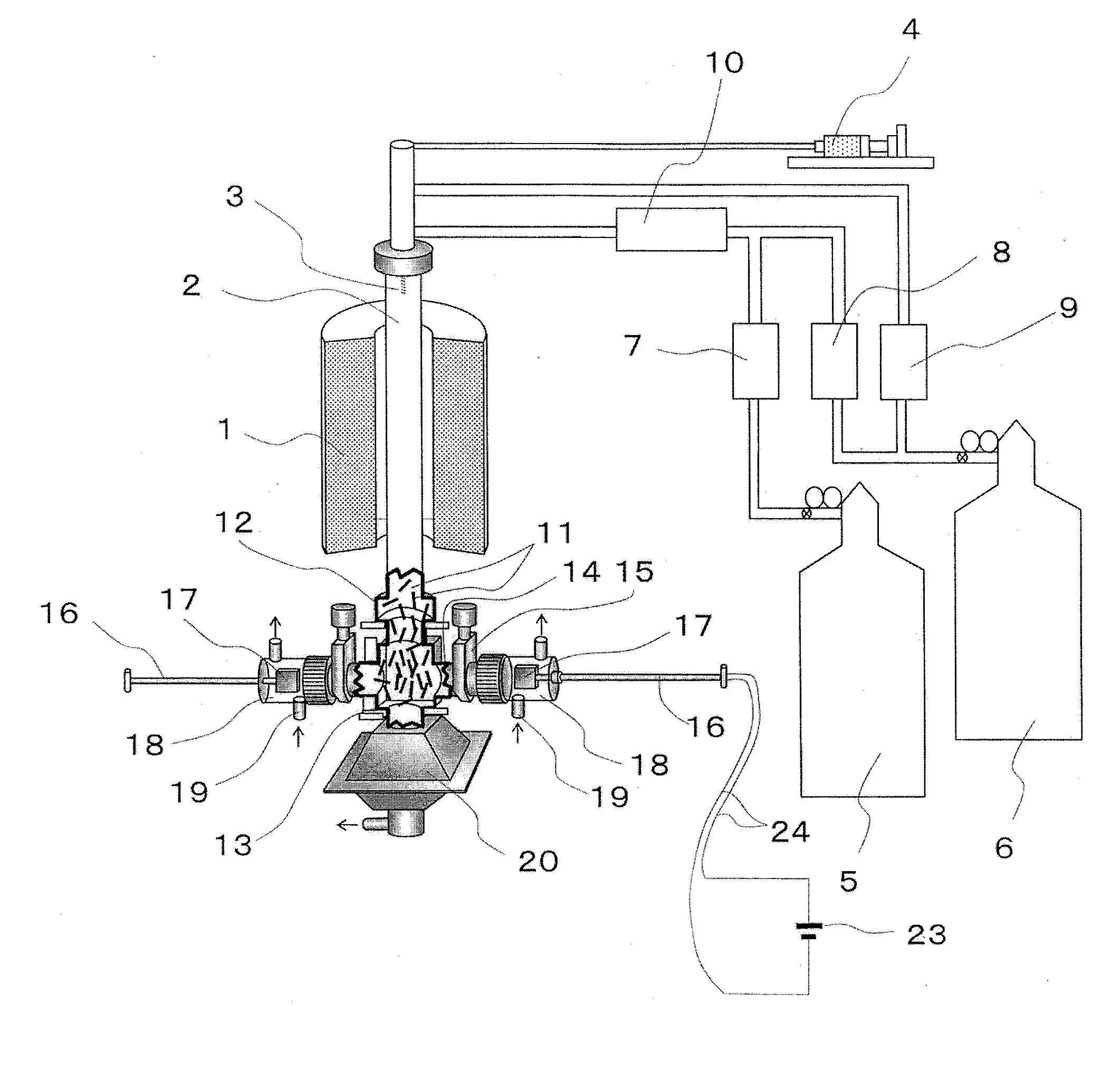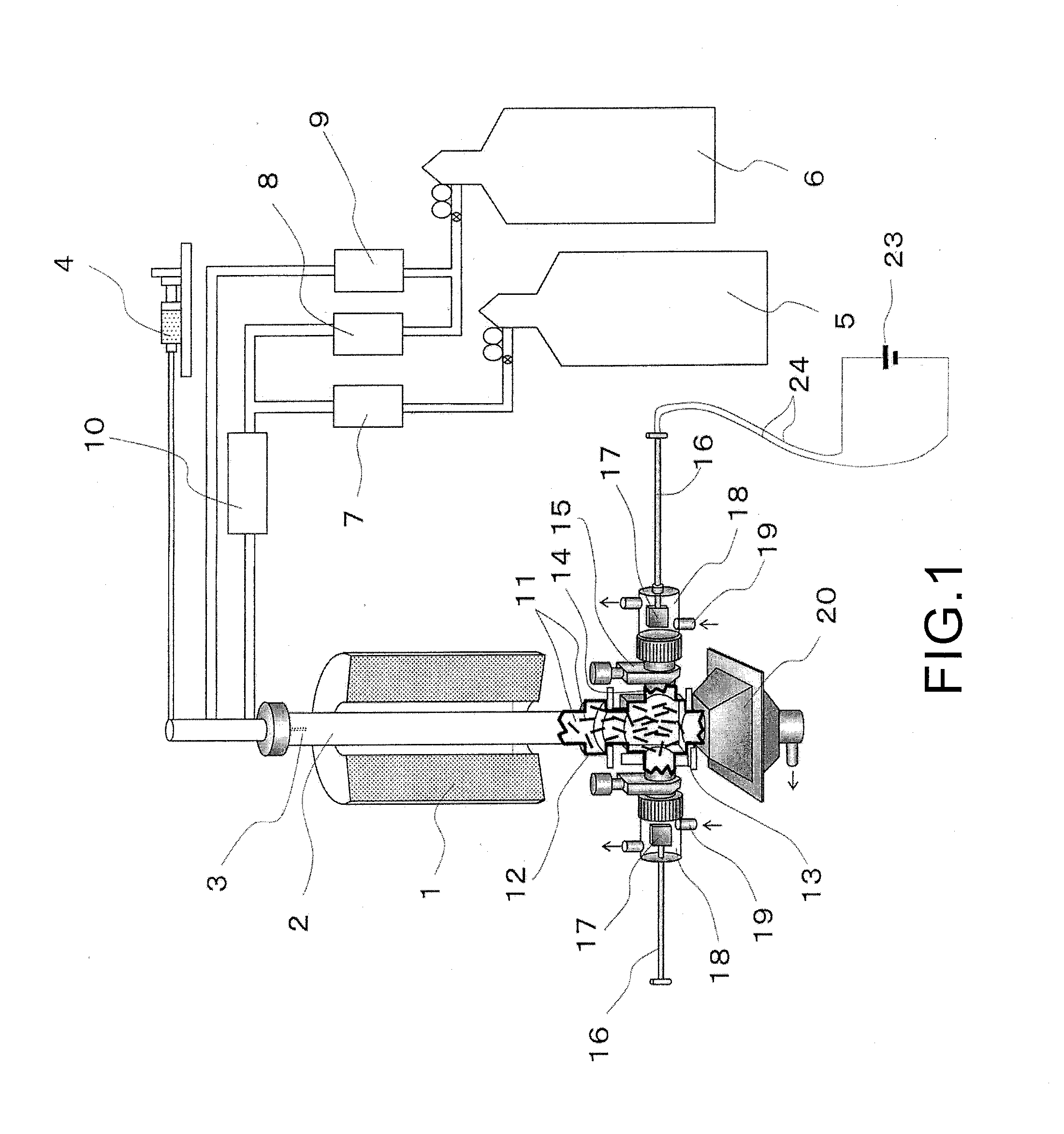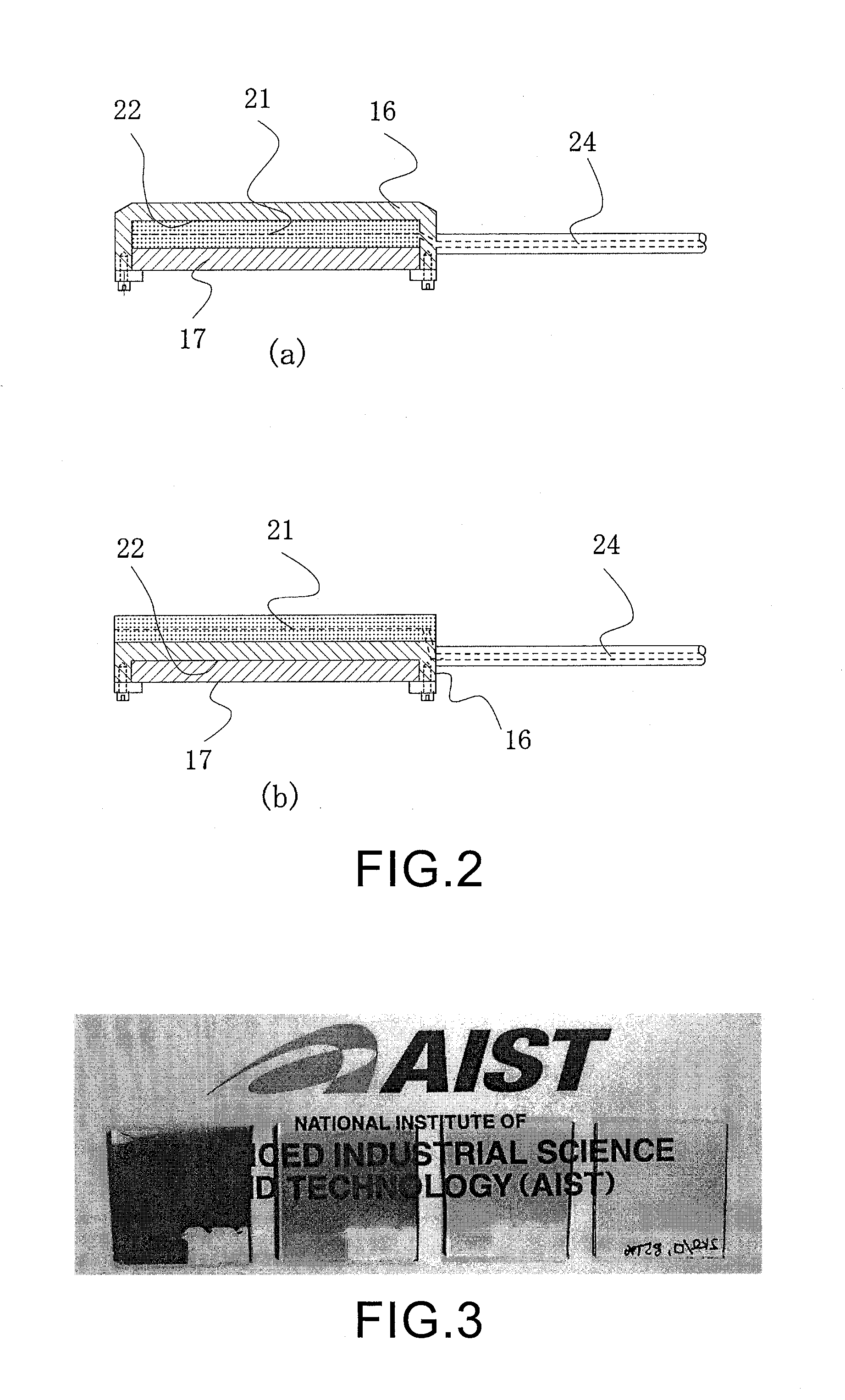Method for forming carbon nanotube film, film-forming apparatus, and carbon nanotube film
a technology of carbon nanotubes and film-forming equipment, which is applied in the direction of chemical apparatus and processes, synthetic resin layered products, coatings, etc., can solve the problems of impairment of electrical conductivity due to nonconductive organic substances adhering to the surface of cnts, polymeric and non-heat-resistant inorganic substrates cannot be used, and achieve efficient mass-producing cnt films. , the effect of low cos
- Summary
- Abstract
- Description
- Claims
- Application Information
AI Technical Summary
Benefits of technology
Problems solved by technology
Method used
Image
Examples
embodiments
[0089]Embodiments of the present invention are illustrated below with reference to the accompanying drawings. In addition, the following embodiments are provided in order for the present invention to be comprehensible, and are not intended to limit the present invention. It is understood that variations, embodiments and other examples made based on the technical ideas of the present invention should also fall within the scope of the present invention.
[0090]FIG. 1 is a front view of an apparatus for forming a SWCNT film according to an embodiment of the present invention, the essential parts of the apparatus are shown in a cross section.
[0091]The part in the apparatus for synthesizing SWCNTs 11 includes an electric furnace 1, a mullite reaction tube 2, a spray nozzle 3, a microfeeder 4, a second carbon source 5, a carrier gas source 6, a mass flow controller of the second carbon source 7, a mass flow controller of the first carrier gas 8, a mass flow controller of the second carrier ...
PUM
| Property | Measurement | Unit |
|---|---|---|
| Temperature | aaaaa | aaaaa |
| Temperature | aaaaa | aaaaa |
Abstract
Description
Claims
Application Information
 Login to View More
Login to View More - R&D
- Intellectual Property
- Life Sciences
- Materials
- Tech Scout
- Unparalleled Data Quality
- Higher Quality Content
- 60% Fewer Hallucinations
Browse by: Latest US Patents, China's latest patents, Technical Efficacy Thesaurus, Application Domain, Technology Topic, Popular Technical Reports.
© 2025 PatSnap. All rights reserved.Legal|Privacy policy|Modern Slavery Act Transparency Statement|Sitemap|About US| Contact US: help@patsnap.com



